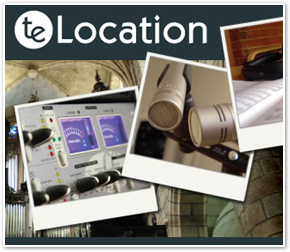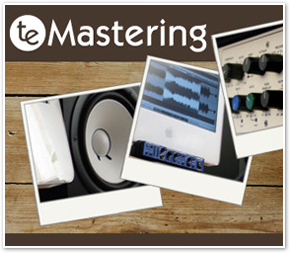






These production tips and tricks are designed to help you make the most of your music. Covering everything from mic technique to post-production, we hope you find them useful!



© Tenth Egg Productions 2009




Think of your studio monitors as a window through which to view your mix. If that window is dirty or the glass warped, then your view becomes distorted. So In audio terms, working in an inaccurate monitoring environment means that every decision you make, be it balance, equalization or panning, is based on a distorted perception of your mix. The result will be mixes that will sound great in your studio, but don't translate well to other systems. In this tip we're going to explore the key factors involved and see what you can do to make the best of your monitoring situation.
Tip 19 : Accurate Monitoring




Although The Yamaha HS80M monitors (above) aren't ruler-flat they perform pretty well without any major peaks and troughs and a good bass extension. However the Yamaha MSP3’s (below) are somewhat less accurate with a more significant rippling across the mid & top end. The bass / lower-mid is somewhat recessed and the very low end rolls off early with a pronounced bass port ‘bump’
Room Acoustics:
Room acoustics play a significant part in shaping the sound that arrives at your ears. In addition to the direct sound from the monitors there will inevitably be some reflected sound bounced off walls, ceilings and any other surfaces in your studio. Because these arrive slightly delayed (having travelled further) they will cause phase cancellations / additions, affecting the tonal balance of the sound you hear. In the worst cases (think small box rooms with shiny wooden floors) the reflections may be almost as loud as the direct sound creating a very confused sound (like listening to your mix through a reverb plugin).
All rooms (and objects) will also have a what is called a resonant frequency, the frequency at which they will start to ring, a bit like a tuning fork. If your room exhibits an obvious ring then, again this can affect the accuracy of your monitoring. In the same way as you can identify frequencies to cut when EQing, set up a narrow EQ boost, turn up your speakers and sweep the EQ up and down, you'll probably hear that certain frequencies jump out.
Full room treatments can run into tens of thousands of pounds, but there are plenty of solutions that you can implement on the cheap: Move your speakers away from walls to prevent any early reflections - particularly out of corners which will cause a noticeable bass boost. In an ideal world the distance between your speakers the nearest surface would be at least twice the distance between you and the speakers. If you have a shiny wood floor then a rug will make a noticeable difference with the added benefit of being cosy under foot and try to break up any other flat surfaces with furniture (a sofa or bookcase along the back wall is a good option).
With the home studio revolution the cost of actual acoustic treatment has hit the floor so for just over £100 Universal Acoustics offer a kit that includes 20 acoustic tiles and 2 bass traps. With tiles placed directly above, beside and behind the listening position a kit like this is a very cost-effective way to get a decent sounding room up to scratch.
If you're going to get serious about treatment then it's worth spending some time working out the flaws of your room and the designing a solution to suit that need, using a variety of tiles and traps to absorb and diffuse different frequencies.
Speaker Quality:
Perhaps the most obvious variable at play is speaker quality. In general the flatter the frequency response the better, as any significant peaks or troughs will result in the opposite peak / trough in the tonal balance of your mix - bright monitors will create dull-sounding mixes and visa-versa. You also want to use monitors with a decent bass extension, particularly if dance music is your thing, as the bass-end is always a tricky area to judge. A bass driver around 8 inches is usually provides sufficient reach, but you might want to complement smaller systems with a matching sub.
If a manufacturer doesn't supply a frequency plot as part of their technical specs then that's usually a bad sign, but specs should only ever be a guide, the real proof is in the listening.
Positioning:
You can have the flattest sounding monitors in the world but if you don't position them and yourself correctly you won't be receiving the full benefit. The ideal listener position is commonly refereed to as the 'sweet spot'. If you imagine a triangle with speakers at two of the corners and you at the third, the distance from you to each speaker should be the same as the distance between the two speakers (probably around a metre for most home/project studios). The speakers should also be angled inwards to focus the sound directly at each ear with the treble driver at roughly ear height. Just as with microphones, the off-axis frequency response of speakers (i.e. outside the sweet spot) is often a lot more uneven.
It might sound obvious but you also want to avoid any obstacles, such as computer monitors or mixer meter bridges sitting between you and the speakers (an all too common sight even in commercial facilities). And you should lay out the rest of your kit so that during any critical listening you will be sitting in the sweet spot. As more and more production work becomes computer-focused the traditional setup of mixer between the two speakers and computer to one side is an increasingly imperfect solution.
Finally, you want to make sure that your speakers are decoupled from the surface they sit on to avoid them vibrating in sympathy with your speakers and colouring the sound. Genelec's 8000 series monitors feature an integrated decoupling and positioning system (called Iso-Pod) that both minimizes vibrations and allows for precise angling of each monitor. But separate foam-based decoupling products are also available from companies such as Auralex that sit under your monitors and acoustically isolate them from the surface below. Beside the beneficial acoustic properties these will also help protect any other studio equipment on the same surface from potentially damaging low frequency vibrations.
Volume and Listening Behaviour:
Research by Fletcher and Munson in the 1930s demonstrated that the human ear's frequency sensitivity varies with volume. These Fletcher-Munson Curves, as they have become known, show that at low volume we are most sensitive to the mid range and that as volume increases our hearing starts to flatten out. But monitor too loud and you run the risk of creating tracks that will sound bass-light in a typical listening situation. And of course there is also the issue of damage to hearing.
83db SPL has established itself as a good balance between a flat listening experience and safe listening level and in a future production tip we'll run through how to calibrate your setup. An important part is working with at a fixed monitoring level and avoiding the temptation to gradually turn up the volume over the course of a session. So find a comfortable listening level and keep it there, only turning up when you need to hear the detail in a particular mix element.
You can find some other general tips about good listening practice, including the use of reference material in Production Tip 4 : Get Perspective
Headphone vs Speakers:
Headphones have been ignored thus far in our discussion of accurate monitoring. But in many ways they seem like the perfect solution, avoiding issues involving room acoustics and staying in the sweet spot. They also give you a lot more bang for your buck costing a fraction of the equivalent speaker setup.
There are some issues to be aware of, which we covered in Production Tip 12 : Mixing on Headphone but for some this isn't going to be a great solution. So if you want to turn over your main monitoring duties to headphones then it's worth investing in a good quality and comfortable pair. Headphones that fall into this category usually start at around £100. And as the risk of damage to hearing is greater you should be extra careful to practice consistent safe levels and perhaps consider some form of protective volume limiter for those unforeseen circumstances.
Go forth and monitor accurately!
Hopefully this production tip has provided some insight into the importance of accurate monitoring, really it can affect every decision you make in the studio from initial mic selection / positioning to final processing. With careful attention to speaker selection, room acoustics and listening habits you can create an environment where what you hear is a realistic representation of your source audio. Maybe you can't tick all the boxes straight away but you can make sure that you're getting the best from what you've got.
music mastering

Tips and tricks from our engineers to help you with your music making


Industry news, useful links and what’s going on at Tenth Egg





Share us with your friends

A different approach to music production.







Genelec have made the job of decoupling and positioning your monitors easy with their integrated Iso-Pod mount on the base of their 8000 series of professional studio monitors.



If you room is less than ideal and DIY solutions aren’t doing the trick, acoustic treatment kits like the one pictured right from Universal Acoustics are now very reasonably priced and will help tame the worst of the reflections around your sweet spot. The results should be a clearer stereo image and an overall more defined sound.




Share us with your friends

